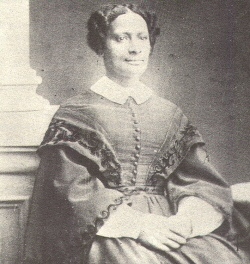Sarah Parker Remond

- Born: 1824
- Died: 1894
- Occupation: lecturer and doctor
- Claims to fame: she was an abolitionist and a suffragist
Her background
Sarah was born in Salem, Massachusetts in the USA into a family of successful businesspeople, entrepreneurs and anti-slavery campaigners. Despite being born free, her parents had experienced racism and were aware of the conditions for other black people in the USA. As a young, black woman, Sarah attended a segregated school. She brought a legal case against a theatre after being forced out when she refused to sit in segregated seats. She won the case and the theatre was ordered to stop segregated seating. She became a speaker for the American Anti-Slavery Society, touring the USA and, in 1859–61, Britain and Ireland. In 1833, slavery was abolished in the Empire, but it still traded with countries such as the USA that condoned and used slavery. Sarah’s talks appealed to people in the UK to not use slave-produced goods. She continued to visit Britain and Europe during the US Civil War period.
As a suffragist
While in the UK, Sarah studied at Bedford College for Women and became involved with women’s rights in Britain and the USA. Sarah is believed to have been the only black woman to have signed the 1866 petition for women’s voting rights. In 1867, she moved to Italy, and qualified in 1868 as a medical doctor. She married an Italian man and lived in Rome, working as a doctor. She remained passionate about equal rights.
Glossary
- Segregation – the prejudiced and racist practice of separating people based on skin colour or ethnicity
- The US Civil War (1861–65) – between the Northern and Southern States, partially fought on the issue of slavery
Questions
- Why was it important for abolitionist speakers to visit the UK?
- Was Sarah a typical suffragist?
- Why do you think someone like Sarah became a supporter of women’s rights?
Useful resources
- Elizabeth Crawford, The Women’s Suffrage Movement: a reference guide, 1866–1928 (Routledge, 1999)
- Claire Midgley, ‘Anti-slavery and feminism’, Gender & History, 5:3 (1993), pp. 343–362
- HA Suffrage Case Study - Sarah Parker Remond
113.6 KB PDF document - HA Suffrage Case Study - Sarah Parker Remond (Word)
319.1 KB Word document
